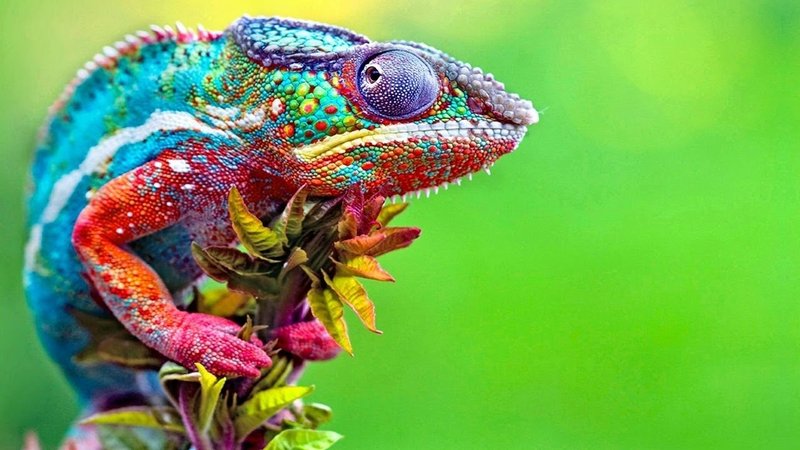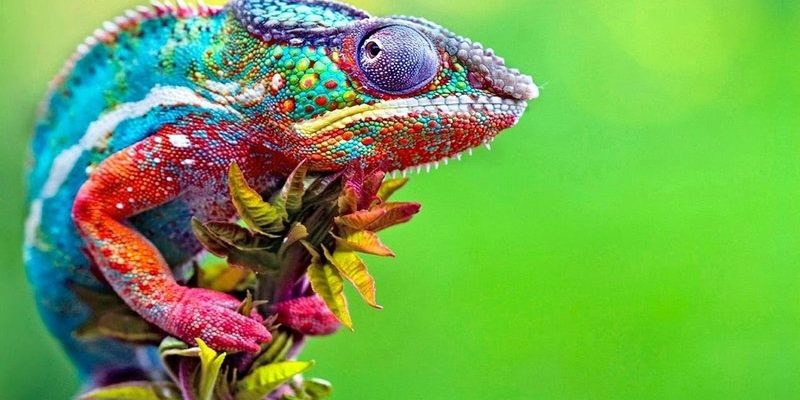
The Parson’s chameleon, unique to Madagascar, is known for its stunning colors and impressive size. While they might not be the only chameleons out there, they certainly command attention with their spectacular displays. You might wonder why everyone’s so obsessed with their color-changing capabilities. Is it just for show, or is there more going on beneath that flashy exterior?
The Science of Color Change in Chameleons
To understand how the Parson’s chameleon changes colors, we first need to look at the science behind it. The process isn’t simply about shifting shades on a whim. Their skin contains specialized cells called chromatophores. These cells are like tiny paint buckets, filled with different colors such as red, yellow, and blue.
When the chameleon experiences emotions or environmental changes, such as temperature or light, these cells can expand or contract. Imagine a balloon that can stretch and shrink. When the chameleon’s chromatophores react, it can create a brilliant array of colors that shimmer and shift. It’s like an artist adjusting their palette!
Interestingly, the yellow and red pigments are located in different layers of the skin. The top layer contains iridophores, which can reflect light, adding to the vibrant effects. So, when you see that breathtaking transformation, remember it’s not just about play; it’s a mix of biology and emotion coming together.
Myths About Color Changing
There’s a lot of chatter about chameleons changing colors to blend into their surroundings. Here’s the thing: while they do have some camouflage abilities, it’s not as straightforward as you might think. The idea that they can change colors to match every leaf or branch they sit on is a bit of an exaggeration.
Instead of being expert mimics, chameleons primarily change colors based on mood, stress, or temperature. For instance, if a Parson’s chameleon feels threatened, it might display darker shades as a form of warning. So, while you might see a hint of green or brown, it’s more about their feelings than perfect disguise.
This myth can lead to misunderstandings, especially for those who want to keep these creatures as pets. If you’re hoping to see your chameleon magically blend in with your green décor, you might be disappointed.
Color Changes and Communication
Let’s talk about how color changes play a massive role in communication among Parson’s chameleons. These little guys don’t have vocal cords (talk about quiet!) but rely heavily on their colors to express themselves.
When two males encounter each other, you might see a vibrant display of colors—bright hues to signal dominance or attract a mate. Females can also show different shades depending on whether they’re receptive to mating. They communicate their availability by changing their colors. It’s like wearing a neon sign!
So, next time you see a Parson’s chameleon in action, remember that those colors are telling a story—a narrative of emotions, intentions, and social dynamics. It’s not just about aesthetics; it’s crucial for their survival and social interactions.
Environmental Influences on Color Change
Aside from emotions, environmental factors also influence the Parson’s chameleon’s skin color. Temperature plays a significant role. When it’s hot, they might display lighter colors to reflect sunlight, helping them cool down. Conversely, in cooler conditions, darker colors can help absorb warmth.
Lighting conditions also matter. In bright sunlight, their colors can appear more vibrant, while subdued light can dull them down. Have you ever noticed how colors pop on a sunny day compared to a cloudy one? The same principle applies here!
If you’re thinking about keeping a Parson’s chameleon as a pet, it’s essential to provide the right environment. A well-lit habitat mimics their natural conditions, which allows them to express their colorful personalities fully.
Color Change and Health
Believe it or not, the colors of a Parson’s chameleon can indicate their health. A chameleon’s colors can grow dull if they’re stressed or unwell. For instance, if a chameleon is sick or in distress, you might notice a shift to darker, less vibrant hues.
This is a warning sign for pet owners. If you see your chameleon changing colors in a way that seems off, it could mean they’re experiencing health issues or stressors in their environment. Regular check-ups and attention to their habitat can help keep your colorful companion happy and healthy.
It’s fascinating how much their colors can tell us about their well-being. This means that while their color-changing abilities are impressive, they also serve a practical purpose that’s crucial for understanding their needs.
The Parson’s chameleon is a remarkable creature that truly lives up to the hype surrounding its color-changing abilities. While myths suggest they can change colors at will for camouflage, the reality is far more complex and beautiful. Their color changes reflect emotions, environmental conditions, and even health status, making them a rich subject of study.
If you’re ever captivated by their vibrant displays, remember: there’s a lot of science and communication happening beneath those colors. As we continue to learn about these incredible lizards, appreciating their unique adaptations only adds to the wonders of nature. So, the next time you catch a glimpse of a Parson’s chameleon, take a moment to admire the interplay of biology, emotion, and vivid artistry in the animal kingdom.

